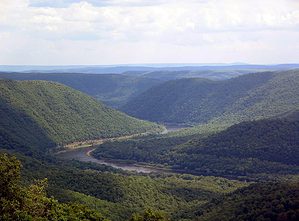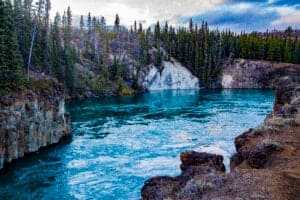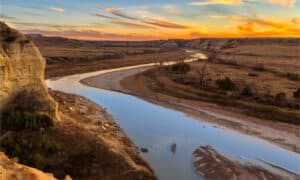Virginia’s largest river is the James River. It flows across the entire state, contributing to the Chesapeake Bay. The river is home to many fish species including smallmouth bass, channel catfish, flathead catfish, and various sunfish species. Also, multiple organizations annually stock the river with muskies, though they can be difficult to find.
The river is split into three main sections: the Upper, the Middle, and the Lower. The Upper section starts its journey in Alleghany County and winds through the Alleghany and Blue Ridge Mountains until it hits Lynchburg, where The Middle section begins. The Middle runs to the Fall Line in Richmond, where the Lower starts, finally emptying into the Chesapeake Bay.
In 2013, the river’s association created a “river watch” to let residents and tourists know if the river is safe to swim in. They found that on average, the river is generally safe for recreation. In fact, 83% of all samples taken since 2018 met the state’s safety standard. High levels of bacteria made up the other 17% of samples. The bacteria showed up primarily after significant rain events. Rain washes bacteria pollution into the river from surrounding land or sewage systems.
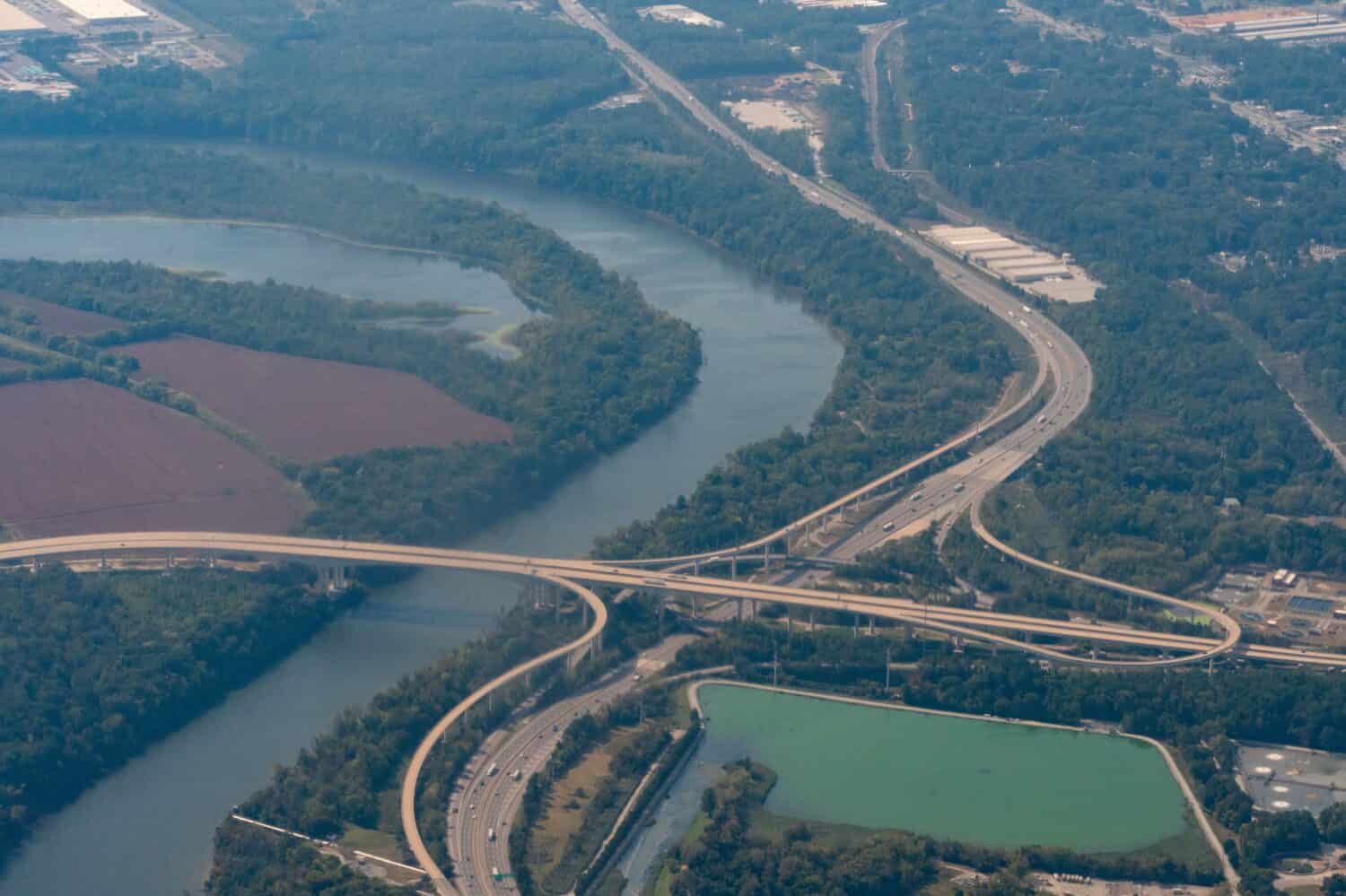
Virginia’s largest and longest body of water, the James River, caused transport and commerce to grow.
©John McAdorey/Shutterstock.com
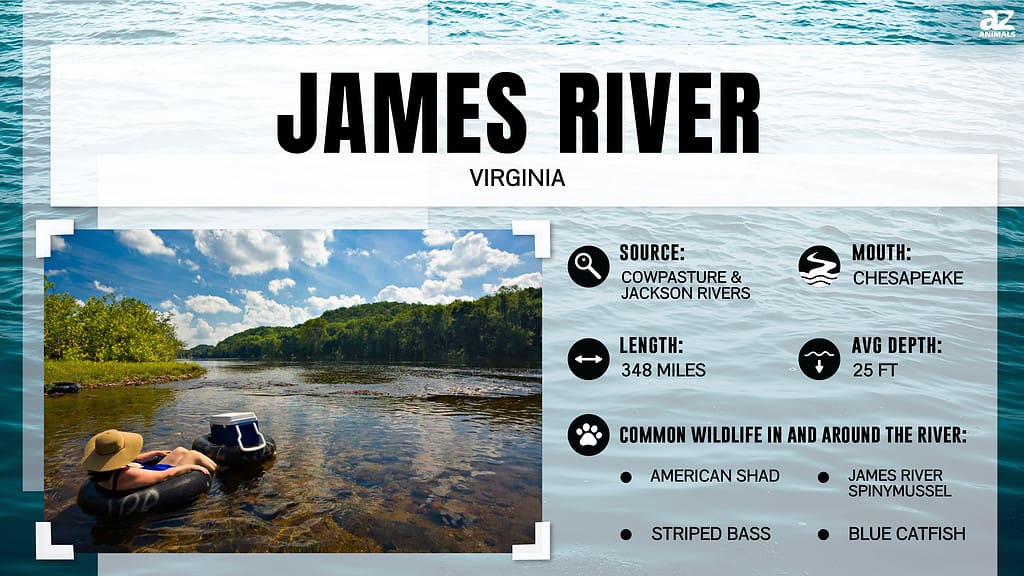
History of James River
The James River is known as “America’s Founding River.” In 1607, it was the site of the first permanent English colony, Jamestown. Also, it was home to Virginia’s first colonial capital, Williamsburg. The river was even a navigational tool for John Smith in the 1600s. Like other rivers, it started as a new fountain of life for Native Americans and early settlers, until industry reared its ugly head. The James River was one of the sites for America’s first industrial revolution in the 1800s. Also, ironworks claimed the rapids near Richmond. By the time the twentieth century rolled around, the river was a polluted mess. Decades of unchecked dumping killed wildlife and made the water unsafe and undrinkable.
But now, the river is making a triumphant comeback. The river is now “halfway to healthy”, due to clean-up efforts. The United States Environmental Protection Agency (EPA) reports that 50% of the river and its tributaries are polluted, but as time goes on, it continues to improve.
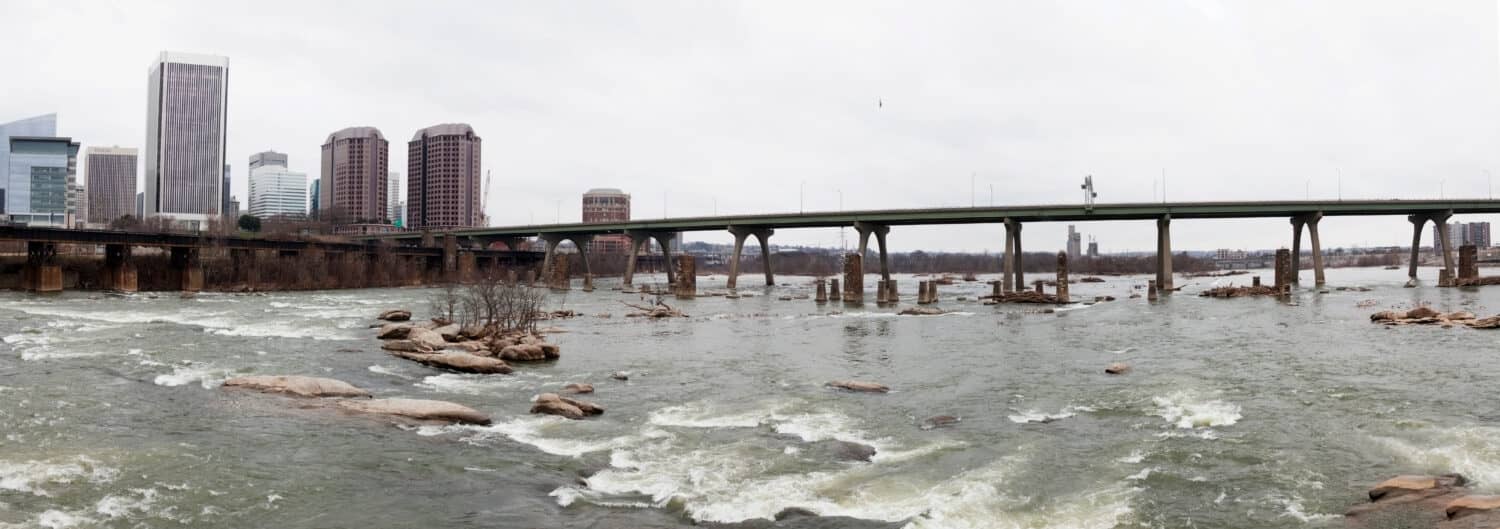
The James River is an integral part of America’s history. A third of all Virginians depend on the waters.
©Noel V. Baebler/Shutterstock.com
The Ecology of the James River
With its history of pollution, many ask what is in the James River. The James River is a tidal freshwater marsh. This means freshwater from the river and its streams meet the ocean tides. The river flows west from Virginia to the east, where it becomes a tidal estuary. This means it has a free connection with the open sea. All of this makes for a complicated and diverse ecosystem, as the James River stretches from the highlands in the west to the lowlands at the mouth of the river. Alongside the river are beautiful forests with looming pine and oak trees. The river also boasts floodplain forests around the Fall Line in the Lower section. Also, tidal freshwater marshes lie along the Coastal Plain section of the river. Large grass and floating or submerged vegetation like salt hay, bulrushes, and cattails dominate the river’s marshes.
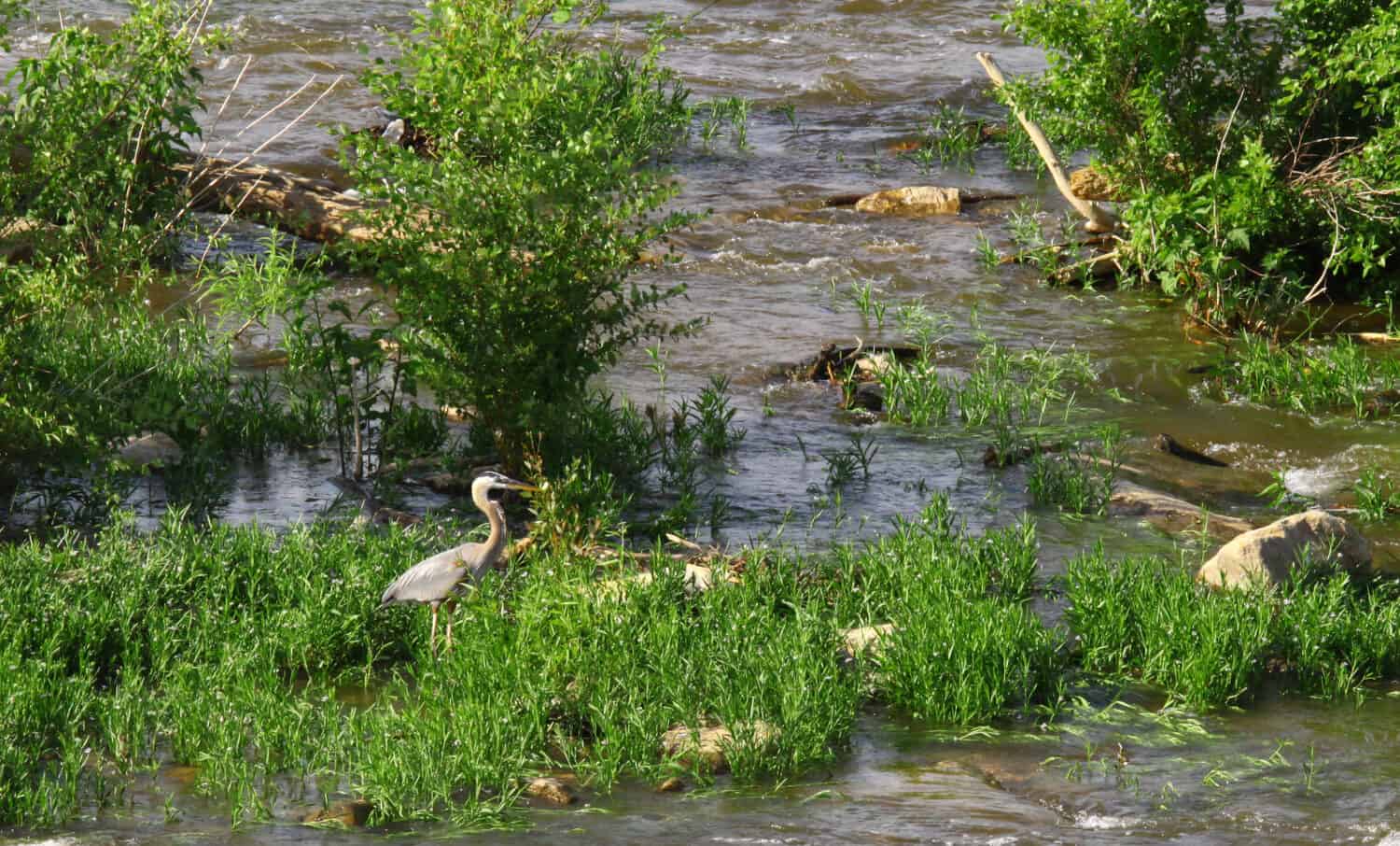
The James River, home to much plant and wildlife, crosses numerous ecological regions across Virginia.
©Barry Blackburn/Shutterstock.com
Is it Safe to Swim in the James River?
Yes, it is safe to swim in the James River, however, caution is advised. Experts state that local waterways are safe for recreation, but extra caution is necessary after rain.
Today, agricultural and urban runoff are the main pollutants in the James River. The main cause of water quality issues stems from phosphorus and nitrogen pollution from agricultural runoff. This creates algae blooms that suffocate aquatic life.
When it rains, everything washes into the James River. Therefore, city officials along the river encourage residents to install rain gardens or plant trees and native plants that slow stormwater.
The James River Park is a great part of the river for swimming access. There are multiple places to wade and swim, and spots such as Texas Beach and Pony Pasture have easy access points for visitors to walk into the refreshing waters. Also, Huguenot Flatwater provides access to calm waters. Because the river tends to get deep quickly, swimmers are warned to tread carefully and wear life vests and closed-toed shoes. The river also has many currents and even up to Class IV rapids. Since the bottom is uneven, swimmers can find themselves in over their heads, even if the waters are low.
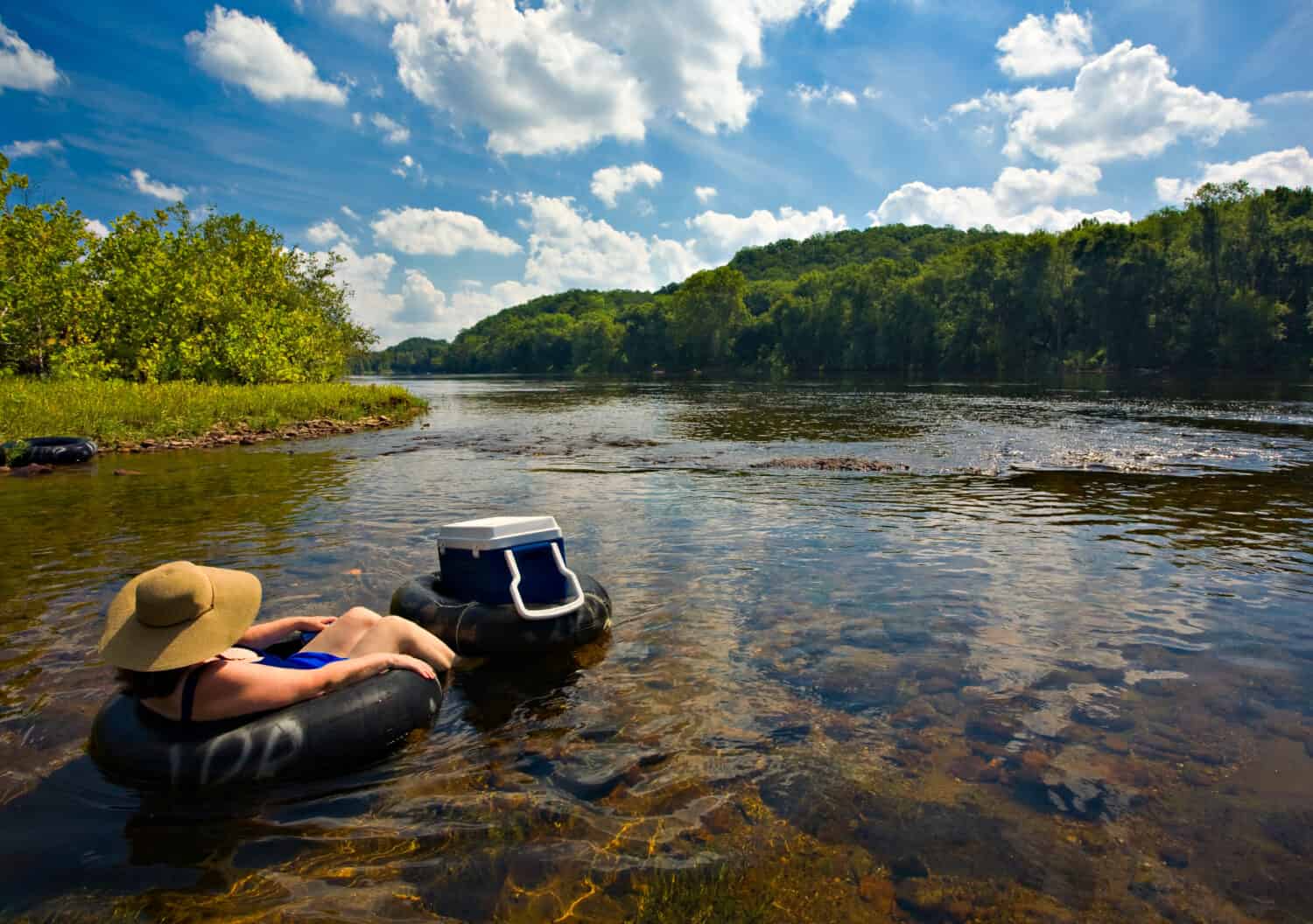
The recreational options at the James River are endless. You can hike it, bike it, swim it, run it, or raft it!
©jack looney photography/Shutterstock.com
Where is the James River?
The James River begins in the Appalachian Mountains. It flows through the entire state of Virginia to the Chesapeake Bay. The river is 348 miles long; however, if the Jackson River is included, it is 444 miles long.
The photo featured at the top of this post is © casualskydiving/Shutterstock.com
Thank you for reading! Have some feedback for us? Contact the AZ Animals editorial team.



